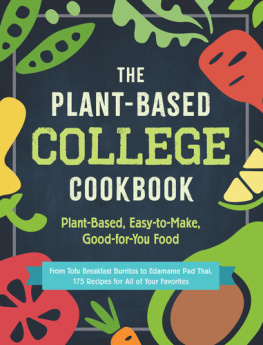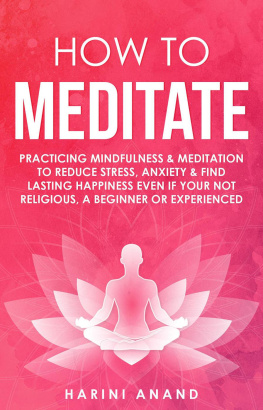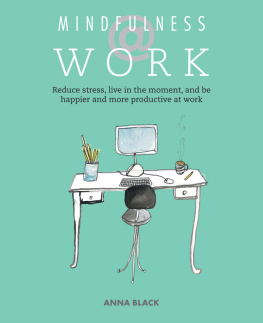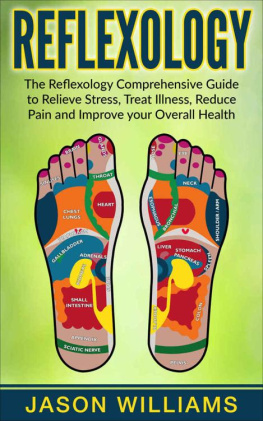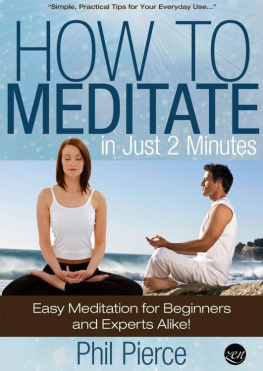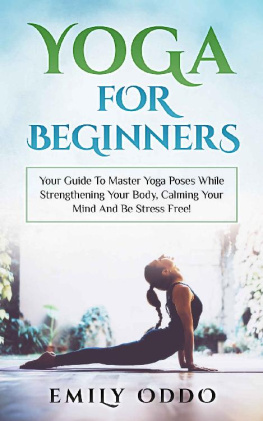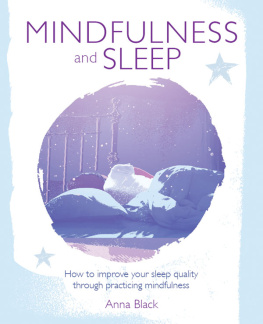Thank you for downloading this Simon & Schuster ebook.
Get a FREE ebook when you join our mailing list. Plus, get updates on new releases, deals, recommended reads, and more from Simon & Schuster. Click below to sign up and see terms and conditions.
CLICK HERE TO SIGN UP
Already a subscriber? Provide your email again so we can register this ebook and send you more of what you like to read. You will continue to receive exclusive offers in your inbox.
We hope you enjoyed reading this Simon & Schuster ebook.
Get a FREE ebook when you join our mailing list. Plus, get updates on new releases, deals, recommended reads, and more from Simon & Schuster. Click below to sign up and see terms and conditions.
CLICK HERE TO SIGN UP
Already a subscriber? Provide your email again so we can register this ebook and send you more of what you like to read. You will continue to receive exclusive offers in your inbox.

Adams Media
An Imprint of Simon & Schuster, Inc.
57 Littlefield Street
Avon, Massachusetts 02322
www.SimonandSchuster.com
Copyright 2018 by Simon & Schuster, Inc.
All rights reserved, including the right to reproduce this book or portions thereof in any form whatsoever. For information address Adams Media Subsidiary Rights Department, 1230 Avenue of the Americas, New York, NY 10020.
First Adams Media trade paperback edition MAY 2018
ADAMS MEDIA and colophon are trademarks of Simon and Schuster.
For information about special discounts for bulk purchases, please contact Simon & Schuster Special Sales at 1-866-506-1949 or .
The Simon & Schuster Speakers Bureau can bring authors to your live event. For more information or to book an event contact the Simon & Schuster Speakers Bureau at 1-866-248-3049 or visit our website at www.simonspeakers.com.
Interior design by Colleen Cunningham
Interior illustrations by Eric Andrews
Cover design by Frank Rivera
Cover image 123RF/Alexey Burmakin
Library of Congress Cataloging-in-Publication Data has been applied for.
ISBN 978-1-5072-0724-6
ISBN 978-1-5072-0725-3 (ebook)
Many of the designations used by manufacturers and sellers to distinguish their products are claimed as trademarks. Where those designations appear in this book and Simon & Schuster, Inc., was aware of a trademark claim, the designations have been printed with initial capital letters.
This book is intended as general information only, and should not be used to diagnose or treat any health condition. In light of the complex, individual, and specific nature of health problems, this book is not intended to replace professional medical advice. The ideas, procedures, and suggestions in this book are intended to supplement, not replace, the advice of a trained medical professional. Consult your physician before adopting any of the suggestions in this book, as well as about any condition that may require diagnosis or medical attention. The author and publisher disclaim any liability arising directly or indirectly from the use of this book.
Contains material adapted from the following title published by Adams Media, an Imprint of Simon & Schuster, Inc.: The Everything Tai Chi and QiGong Book by Ellae Elinwood, copyright 2002, ISBN 978-1-58062-646-0.
INTRODUCTION
Tai chi is an ancient movement activity that can help you reduce stress, improve your health, and relax your body. These simple, flowing activities were almost unknown in the Western world until the 1950s, but today they are popular worldwide... and with good reason! Tai chi can contribute greatly to your physical, mental, emotional, and spiritual well-being by improving your muscle tone, quieting your mind, and connecting you to your spiritual side, to name just a few benefits.
One additional benefit of tai chi is that, just like the best things in life, its free. You dont need an expensive gym, trendy clothes, or special equipmentyou can do these activities anywhere, anytime. Another plus is that because tai chi involves gentle, nonforceful movements, its perfect for all ages and ability levels.
What Does Tai Chi Chuan Mean?
The words tai chi chuan are pronounced tie chee chewan. They come to us from the book I Ching , which embodies the Chinese philosophy and faith of Taoism. (The Taoist philosophy was expressed by famed Chinese philosopher Lao Tzu in his book the Tao Te Ching .) Tai chi means supreme ultimate. In the beginning of all things, there is oneness, and then the oneness divides into two forcesthe female force of yin and the male force of yang. Tai chi is located in the nanosecond of the division of yin and yang. Chuan means fisted hand. So tai chi chuan means supreme ultimate fisted hand. (The chuan is now dropped because the fist portion of the term is rarely the focus.)
WHAT IS TAI CHI?
Tai chi (pronounced tie chee and sometimes spelled taiji) involves a series of prescribed positions done in predictable, flowing sequences that use every muscle and joint in the body. These flowing sequences are slow, relaxed, stylized, and comfortable motions that look a bit like swimming without the water. By gently twisting and turning as you balance and rebalance your arms and legs in a lovely, nonhurried, steady, flowing sequence, every portion of the body is used, refreshed, and revitalized.
When you see tai chi practiced for the first time, what will likely catch your attention is the grace, poise, and serenity emanating from the practitioner. That is how tai chi looks from the outside. To the person doing the movements, it is a calming, centering, and quieting experience that improves feelings of personal well-being and general health.
Tai chi chuan was developed by ancient Chinese monk-warriors as a martial art. In that time, the spiritual development of many monks was combined with the warriors path. The goal was to have a peaceful inner world connected to the oneness of life and also to have tremendous martial arts skills. Perfection was achieved by maintaining peace and honing warrior skills at the same time.
The practice of tai chi chuan began somewhere between 550 B.C. and A.D. 1300. Tai chi chuan was taught and transmitted through the centuries in secrecy. The teaching was passed from master to student in the strictest of privacy. For centuries, the secrets of tai chi chuan were well guarded among a privileged few, but sometime around the late 1800s or early 1900s it was exposed to the Chinese general public.
TRACING TAI CHIS ROOTS
The earliest references to tai chi chuan involve a Chinese hermit named Xu Xuan Ping, who some say formed the basis for tai chi with his thirty-seven patterns of movement. The patterns were also referred to as Changquan (Long Fist), after Long River (the nickname of the Yangtze River), because the movements of tai chi chuan were reminiscent of a riverflowing, powerful, and uninterrupted. Very close to the same time, Li Dao Zi, a Taoist priest, practiced a similar physical movement. These first emergences of tai chi occurred during the Tang dynasty ( A.D. 618907).
Tai Chis Connection to Martial Arts
Martial arts in the ancient world didnt simply mean self-defense, but was a way of life for monks who were also warriors, and described the revered balance of Old China. Tai chi without the chuan (fisted hand) is enjoyed by many people today as a tool for better health, longevity, and improved well-being. These very qualities contributed to a more balanced life for a warrior-monk and also enhanced his fighting skills. Harmony, a calm attitude, and receptivity to increased mental clarity became aspects of martial arts to which warriors aspired. The warrior was able to blend this embodied art of inner harmony with the outer force of battleto be in a warriors conflict, conducting the business of war, but still filled with inner peace. They were in the midst of life while in the midst of death. It was from this need that tai chi chuan (which is todays tai chi coupled with martial arts) was born.
Next page

